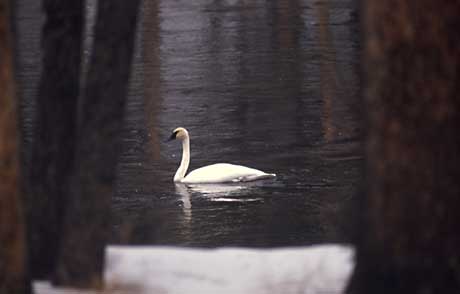
|
Lobby > Exhibits > Hot Spring Ecology > Wildlife > Case Study: Trumpeter Swans WildlifeCASE STUDY: TRUMPETER SWANS Yellowstone is known for long winters with frigid temperatures and deep snows, but the region's hydrothermal areas keep sections of rivers and lakes from freezing. These areas provide year-round habitat for a resident population of trumpeter swans. Open water is necessary to serve as runways for flight takeoffs and for the swans to find food. 
About 98 percent of Yellowstone's 2.2 million acres is not suitable habitat for the trumpeter swans to use year-round. Although the ice-free areas can support the resident trumpeter swan population of 17-25 birds, such sites have become a winter destination for an increasing number of migrating waterfowl. The result is competition and overcrowding in the ice-free zones, which, in turn, drains the available food supply. Many waterfowl must migrate to lower elevation wintering grounds outside of the park's boundaries. Next Case Study: Bison | Next Section: Plants |
|
||||||||||||||||||||||||||||||

